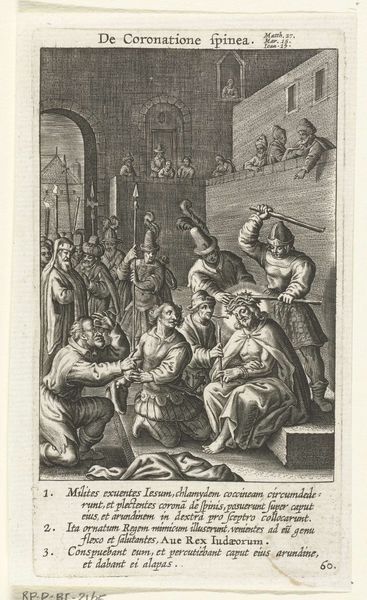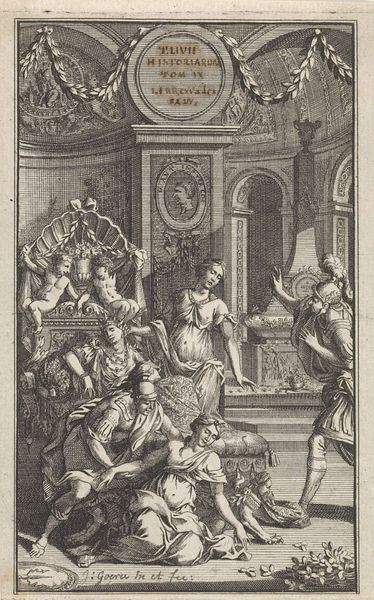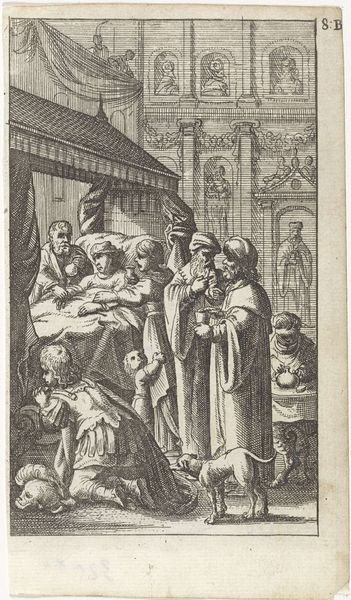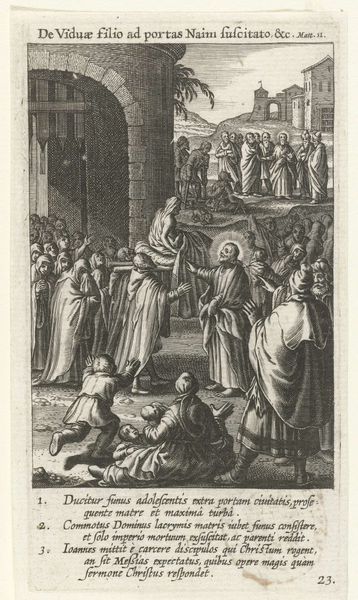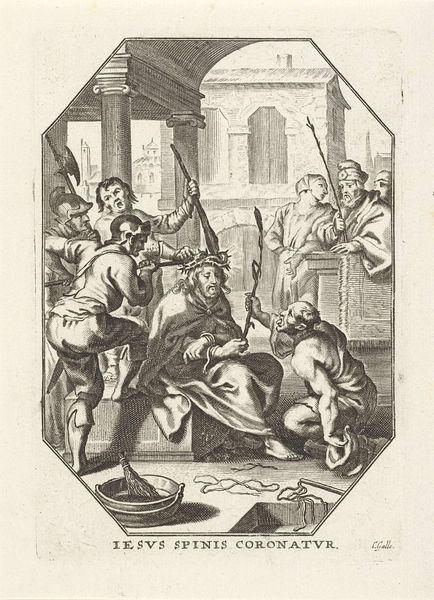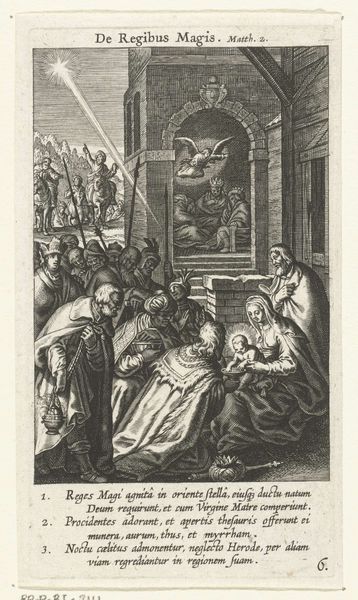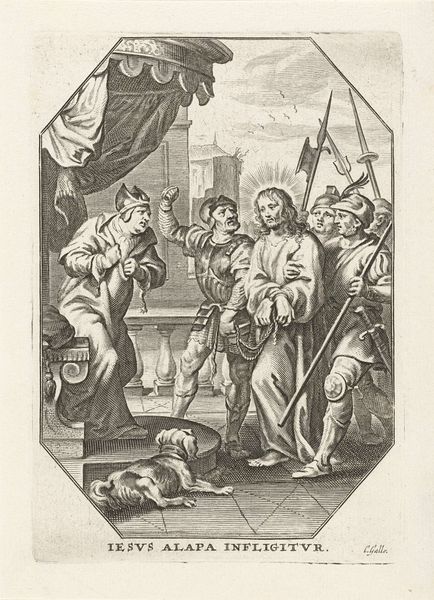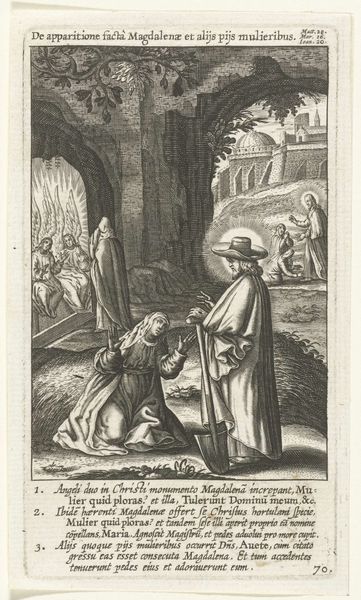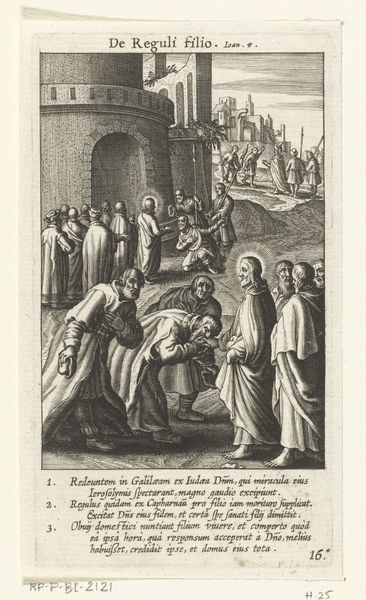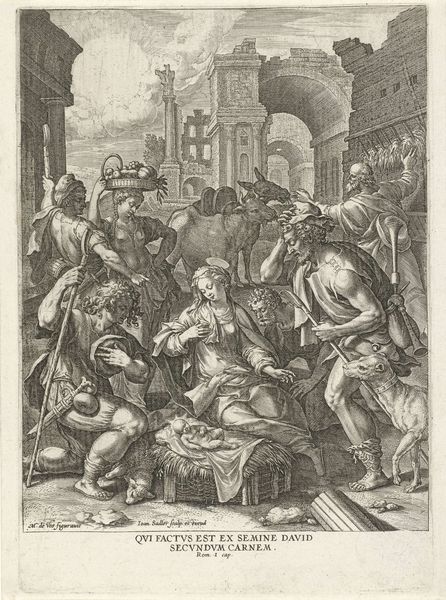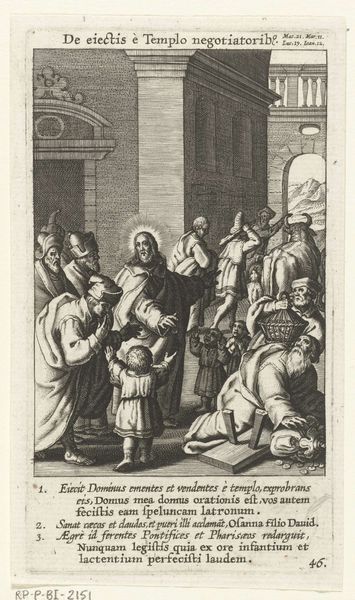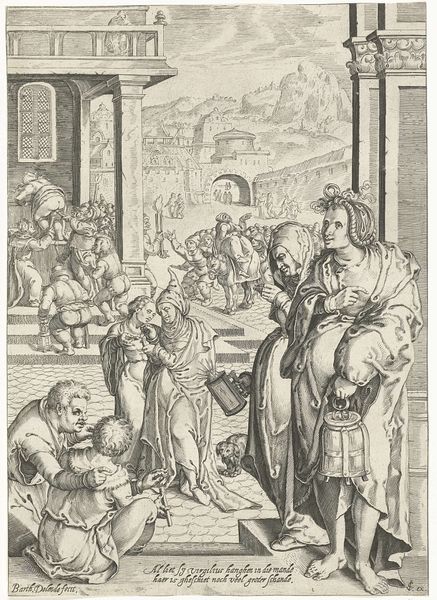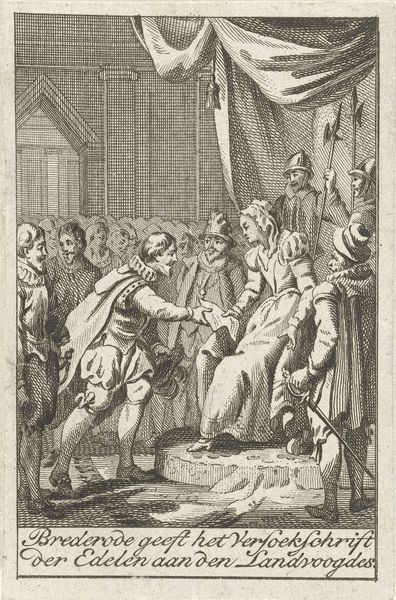
Bespotting van Christus en Christus voor Kajafas 1590 - 1622
0:00
0:00
print, intaglio, engraving
#
narrative-art
#
baroque
# print
#
intaglio
#
old engraving style
#
traditional media
#
figuration
#
history-painting
#
engraving
Dimensions: height 133 mm, width 75 mm
Copyright: Rijks Museum: Open Domain
Editor: Here we have "The Mocking of Christ and Christ before Caiaphas," an engraving by Boëtius Adamsz. Bolswert, created sometime between 1590 and 1622. It's striking how detailed it is, even in this small format. What's your perspective on it? Curator: Looking at this piece through a materialist lens, the first thing that grabs my attention is the engraving technique itself. Think about the labour involved, the tools used to meticulously carve these lines into a metal plate. That process isn't just about depicting a biblical scene; it's about a whole system of production and consumption, isn't it? How do you think the relatively widespread accessibility of prints like this affected the dissemination of religious and political ideologies? Editor: That’s a great point! I hadn’t considered the role of printmaking in spreading ideas so directly. Curator: Exactly! The materiality of the print itself, its accessibility, made it a potent tool. Look closer at the imagery - Christ being spat upon, subjected to physical violence. Consider how those elements play into not just religious, but social narratives concerning power, labor and value. Where are we being invited to assign our sympathies in the frame, and on what terms? Editor: I see that, with the contrast between Christ and his tormentors highlighted so vividly, down to the clothes they're wearing, this could promote feelings about specific positions within society. Curator: Precisely! Think, also, about the materials – the paper, the ink – and their own inherent values, as well as the socio-economic dynamics surrounding workshops that reproduced works like these. They're integral to the work's meaning, too. What’s the political agenda served, given its materiality? Editor: This has really opened my eyes to thinking about art beyond just its aesthetic or religious value, and seeing it as a product of its time and its production methods. Curator: Absolutely. Recognizing the value of material history reframes our perception, enabling us to perceive art not merely as aesthetic forms but as documents of their era and society.
Comments
No comments
Be the first to comment and join the conversation on the ultimate creative platform.
